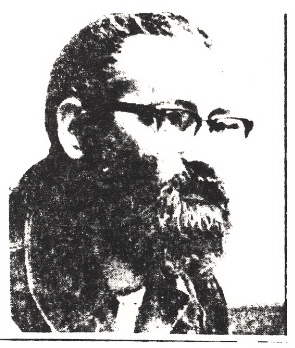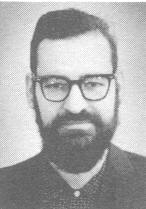Late News on the Jim Berk Memorial Meeting
revised March 31, 2006 at 3:00 p.m.
The location for the Jim Berk memorial meeting is confirmed as initially announced: at the Lucy Evan Baylands Nature Interpretive Center, which is shown near top of this linked map of the Baylands Nature Preserve. Print this map and bring it with you, along with a copy of this text.
Parking, closest and just East of the Interpretive Center, is limited. If full, next best parking is at the Sailing Station, about 400 yards farther east. This parking lot should be ample.
If both those parking lots are full, there is additional parking at the Golf Club, about 3/4ths mile south of the Interpretive Center. Entrance to the Golf Club parking lot is from Embarcadero Way which intersects Embarcadero Road.
Jim Berk's family, friends, and associates hope to see you at the Interpretive Center.
United Stanford Workers
founder Jim Berk will be remembered
1:00 p.m , Sunday, April 2nd, 2006
A public memorial gathering will celebrate the passing of Jim Berk,
who died of a heart attack in January 2006.
Jim's children (Jason and Tosha Berk of East Palo Alto, and Linda and Imani Berk of New York) have called for this memorial event to begin at 1:00 p.m , Sunday, April 2nd, 2006, at the Baylands Interpretive Center. This is at far north end of Embaradero Road, i.e. at the edge of the bay.
|
Check this web page from time to time, for more on the memorial time and place, and thereafter more about Stanford's union history as well. Stanford students have been writing the story of the development of United Stanford Workers. Find one of the best from here.
Jim Berk's children and extended family will be joined by contributors from other aspects of Jim's life. Many of the early Stanford union organizers will attend, including Glenda Jones whose production, writing, and leadership created a strong union newspaper, Employees Organize. At the memorial, candor will prevail in testimonials.

1978
From 1962-1973, Jim was employed as a digital logic design engineer at the Stanford Linear Accelerator Center, before such circuitry and computers became common. He designed, installed, and checked-out state-of-art logic designs for critical radiation safety and personnel protection systems. Often his designs were unique, elaborate, and critical to operations of the accelerator and research programs. He brought great energy and independence of action into the research environment. Over that same time period, Jim responded to demands from staff for job security and decent treatment by leading a drive for unionization. He brought uncommon dedication and talent to both domains.
The precursor to Stanford's current union, USW of SEIU 715, was recognized as a bargaining unit in 1973 after a period of determined organizing by a broad coalition of Stanford employees - led in 1968-1973 with great energy by Jim Berk. Jim carried on as USW's president from 1973-1978. No one who dealt with Jim Berk about union issues will ever forget him.
No stranger to controversy, inside the union and out, Jim emerged as Stanford's union leader. His democratic unionism could be brilliant or flawed, always a work in progress, evolving over time to USW's current place in SEIU 715.
In his later years, Jim was a leader in the interests of the the aged, the homeless, and poor renters in the South of Market district of San Francisco. He organized resistance to the condo gentrification of low-income apartments. He facilitated "South of Market Association" (SOMA) merchant-paid projects doing area and graffiti cleanups. Worked by otherwise unemployed locals, Jim's last group was called, "Safe on Sixth Street" (S-O-S). Jim was an organizer to the end.

1964
If you have written anecdotes to contribute, we might be able to help you share them - however you wish.
|
Changes to memorial plans will be updated on this web page, through Sunday mid-morning, April 2nd, 2006. Check this web page daily for additional clarifying links; and later for reports on the memorial. email jack@truher.net 408-207-3471 |